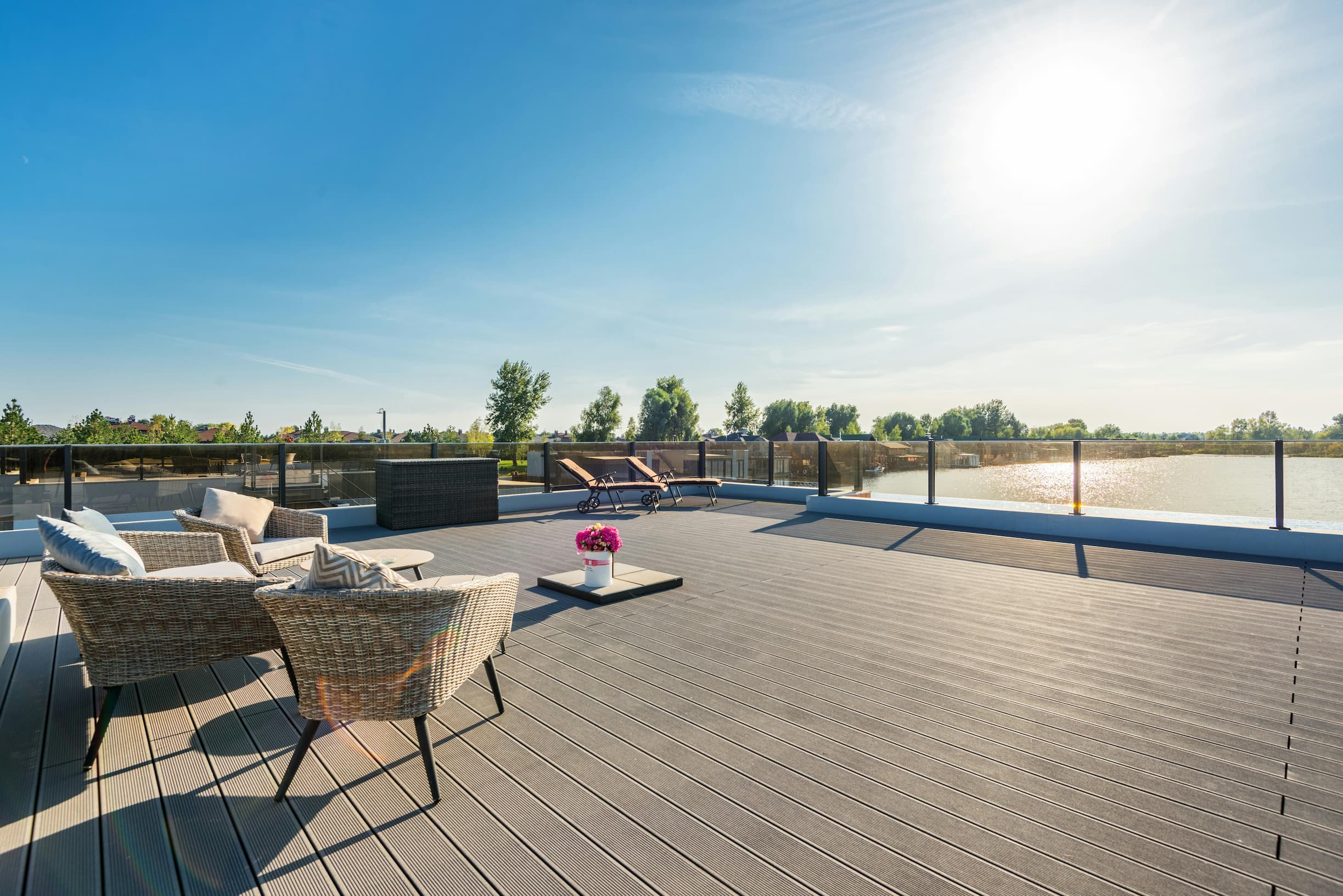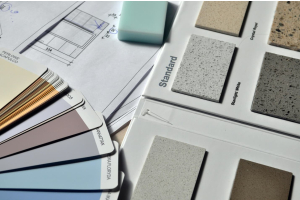
Knowing how to lay composite decking is a handy skill to have in your locker, and it doesn’t need to be as overcomplicated as you may think. With the right tools, foundation, and installation method, you can build a low-maintenance outdoor space that looks smart.
This guide aims to make the process as simple to understand as possible, alongside covering all the recommended installation tips, tools, and FAQs that most of our customers have.
What is composite decking?
Composite decking boards are made from a blend of recycled plastic and wood fibres. Unlike timber decking, they’re much more resistant to rot, splintering, and weathering. This makes them ideal for UK gardens, patios, and terraces.
Composite decking is stocked in many finishes, so there is always something that fits your desired look. Prices can be affordable, with the average board costing about £30, and up to £50 per board for matching edge options.
Step 1. Assess your foundation, which is best?
Before fitting any boards, assess the surface you're working with. Composite decking can be laid over most flat surfaces, but each one requires the right subframe setup.
Grass or Soil
Avoid laying composite boards directly on earth. Instead, dig down and create a compacted sub-base with a weed membrane. Add a timber or plastic subframe on top to ensure stability and airflow.
Concrete
You can install decking over concrete, but use a sleeper system to allow drainage and ventilation. Fix treated timber battens to the concrete and secure the decking on top.
Step 2. Build the subframe
Use pressure-treated timber or metal joists. Space them evenly and make sure they are level. For reference:
Joists: Space 300mm apart for domestic areas.
Leave 5–8mm gaps between boards for expansion.
Allow for a slight slope away from the house for water runoff.
Avoid building in wet conditions. Even treated timber can warp if soaked before fitting. Always check your joist layout against the manufacturer’s spacing guidelines.
Step 3. Lay the decking boards
Begin laying your composite decking boards from the house and work outwards, keeping your alignment consistent as you go. Secure your first board using starter clips to ensure a firm hold and accurate positioning.
For the rest of the deck, use hidden fasteners between boards to achieve a clean finish. Always leave appropriate expansion gaps at the ends and sides of each board to allow for natural movement. When finishing your decking edges and fascias, match the profile and colour of the boards for a professional look.
Common composite decking questions
How do you clean composite decking?
Use warm, soapy water and a soft brush. Rinse with a hose. Avoid pressure washers unless the manufacturer confirms they’re safe.
How much is composite decking?
At Joseph Parr Northants, our composite decking starts from £33.35 per board for 3.6m lengths, with accessories like clips and edging available from £16.
Can you paint composite decking?
No. Composite boards are pre-finished, and painting will void warranties and may cause peeling.
What is composite decking made of?
A mix of wood fibres and recycled plastic. This gives it the appearance of timber with far less maintenance.
Is composite decking slippery?
Most composite decking includes anti-slip textures, especially in grooved profiles. However, like all outdoor surfaces, they can become slippery when wet, so keep them clear of algae or debris.
Closing questions? Send them to Joseph Parr Northants
If you're planning your decking project and need advice, speak with the team at Joseph Parr Northants. Whether you’re unsure about subframes or comparing composite vs timber decking, we are always happy to help.


